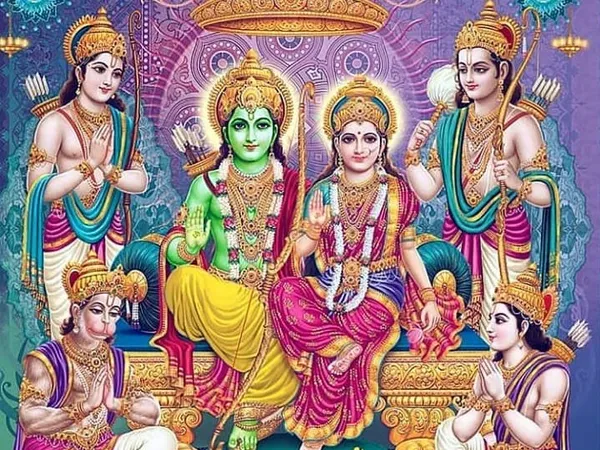
“Rama” is one of the most revered and beloved figures in Hindu mythology, and he is considered the seventh avatar (incarnation) of Lord Vishnu. The story of Rama is primarily narrated in the ancient Indian epic, the “Ramayana,” attributed to the sage Valmiki. The narrative has also been retold in various other texts, regional versions, and forms of art and literature across different cultures.
The key elements of the story of Rama are as follows:
- Birth and Early Life: Rama is born to King Dasharatha of Ayodhya and Queen Kaushalya. His birth is celebrated as Rama Navami. Rama is the eldest of four brothers, including Lakshmana, Bharata, and Shatrughna. He is known for his exemplary qualities such as righteousness, compassion, and loyalty.
- Exile: Rama is destined to become the heir to the throne of Ayodhya, but due to a promise made by King Dasharatha to his wife Kaikeyi, Rama is sent into exile for 14 years. His wife, Sita, and loyal brother Lakshmana accompany him. During their exile, Sita is abducted by the demon king Ravana.
- Search for Sita: Rama, with the help of the monkey-god Hanuman and an army of monkeys, searches for Sita. The search takes him to the kingdom of Lanka, where he faces numerous challenges.
- Battle with Ravana: The climax of the epic is the great battle between Rama and Ravana, in which Rama, aided by the monkey army, defeats Ravana and rescues Sita. This victory is celebrated as Dussehra.
- Return to Ayodhya: After the exile period is over, Rama returns to Ayodhya with Sita and is joyously welcomed by the people. His return is celebrated as Diwali, the festival of lights.
- Rule of Rama: Rama becomes the king of Ayodhya, and his reign is often described as the ideal rule, known as “Ram Rajya.” During his rule, justice, righteousness, and prosperity prevail.
The story of Rama is not only a tale of heroism but also a profound moral and philosophical narrative. Rama is revered as the embodiment of dharma (righteousness) and is often seen as an ideal husband, son, and king. His life and teachings, as presented in the Ramayana, have been a source of inspiration for millions of people, shaping cultural, ethical, and spiritual values in Hinduism. Rama’s story has also influenced various art forms, including literature, music, dance, and theater across different cultures in South and Southeast Asia.
